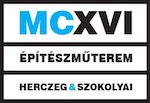| Location | 1101 Budapest, Kőbányai út 30. – Könyves Kálmán krt. 25. |
| Investor | Hungarian Museum of Science, Technology and Transport |
| Floor area | 49 697 m2 |
| Lead Design Consultant | Diller Scofidio + Renfro, LLC |
| Architect of record | M-Teampannon Építészmérnöki Kft. |
| Local architect | New Hall: M-Teampannon Építészmérnöki Kft, Diesel Hall: Nautes Architects |
| General interior designer | MCXVI Architects |
| Leading interior designer | Gábor Szokolyai |
| Architect designers | Anna Szuhányi-Nagy, Bence Czirják, Dávid Kálna, Renáta Bakucz, Anna Racskó, Anna Pásztor, Julia Hegymegi, Anikó Tóth, Gábor Hajdu |
| Photos | Gábor Szokolyai, Péter Rákossy |
| Visualisation | Diller Scofidio + Renfro, LLC |
| Status | interior consturction plan |
| Project year | 2019-2023 |
GENERAL DESCRIPTION
The choice of location far the New Transport Museum is symbolic in itself. ln Budapest, on the site of the farmer Northern Vehicle Repair Plant, the past, present and future are represented simultaneously. The site of the New Transport Museum’s Northern Vehicle Repair Facility was the cou ntry’s largest railway vehicle repair base between 1867 and 2009. The farmer plant, now empty, is a beacon of some 150 years of industrial heritage. The architectural concept sees the site as the cradle of vehicle repair in Hungary, while the buildings are treated as large exhibition spaces, worthy of presentation in their own right. And the vehicles exhibited herein the future will in fact be “returning home”, since most of them were repaired herein the North, once the largest railway vehicle repair workshop in the country. The new museum complex will be built using MÁV’s farmer diesel locomotive repair hall, which will be rebuilt and extended. Going beyond general museums, which are merely about display and presentation, the New Transport Museum will encourage participation and interaction.
The New Museum of Transport is also a vision of a museum far the 21st century, where people can freely roam the site and museum buildings, as opposed to traditional exhibition spaces, without strictly designated routes. The project will not only provide a permanent home far one of Europe’s oldest transport museums, faunded in 1899, but will also be a complex development far the whole city, creating a new transport hub and community space, and a new city centre through the revitalisation of a previously neglected area. The project is one of the largest brownfield developments in Europe.
DIESEL HALL:
Because of its very strong existing character, the Diesel Hall will be the most important exhibited object in the New Museum of Transport, so our main design challenge was to retain and preserve the existing interior atmosphere.
The designed interior of the Diesel Hall is closely linked to the appearance of the existing building and the planned exhibition.
ln analyzing the value of the existing interiors, we believe that it is not only the original building structures, mechanical and electrical equipment and graphics that represent a true value, but also the overall appearance of the current condition and atmosphere that brings them all together and gives a sense of the age of the building.
NEW HALL:
The functional purpose of this part of the building is to increase the available space and to create a generous entrance space and reception hall for the museum function. The main entrance of the building will be replaced by a elegantly designed sunken plaza.
The flexible, high-ceilinged exhibition space on the ground floor of the building, lit by skylights, is bordered by the recessed lobby to the west and the Dízel Hall to the east.
The shed roof is the shed roof that covers the main utility levei of the building and acts as a roof structure, defining the architectural and interior design character of the New Hall.
Regarding the interior design the materials, colors reflect to the industrial history of the building. The colors of the interiors reflect to the color of transportation vehicles. The main materials are the concrete, brick, blackened steel, yellow powder coated or painted surfaces.

 Magyar
Magyar
